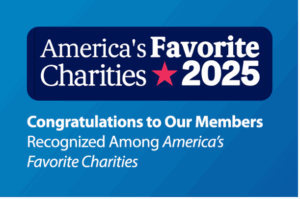Shelley Grieshop, Creative Writer & Public Relations, Totally Promotional | October 11, 2022
Why 2023 is the Year for Workplace Giving Programs and Employee Relief Funds
The uncertainty of the economy this past year makes 2023 a crucial one for charitable organizations, the people they serve, and your company’s employees.
As prices on just about everything continue to climb, more people and organizations will need a helping hand to survive. That’s where workplace giving and employee assistance fund programs come in. Philanthropy from individual donors in the workplace can make a huge difference in the lives of those who are struggling to make ends meet.
We are a charitable world
The pandemic that hit the U.S. early in 2020 and has continued through 2022, delayed or canceled some charitable donation campaigns. Businesses weren’t certain if they would survive the lockdowns, supply shortages and absence of workers. Numerous changes were made to corporate operations and programs.
But despite the pandemic and the issues plaguing the world today, Americans as a whole continue to show their compassion. In 2021, more than half of U.S. citizens donated an average of $574 to charity.
In fact, COVID-19 did little to slow charitable giving. America’s Charities, a nonprofit that works at the nexus of employers, charities and donors, grew its employee assistance fund (EAF) program by 300 percent in 2020 — the very first year of the pandemic. Interest in supporting employees through EAFs (also commonly referred to as employee relief funds and emergency employee care funds) has only continued to grow in 2021 and 2022, with many employers finding EAFs a good mechanism for helping employees overcome challenges resulting from hurricanes, tornadoes, power outages, and other crises.
Better to give than receive
Companies that adopt charitable giving programs have plenty to gain. It’s more than a feel-good moment, although that can be part of it. Revenue and reputation can get a big boost when a business shares its good fortune.
American Advisors Group, a mortgage lending company, smartly focuses its charitable efforts on the clients it serves each day. Its customer base is older Americans so it chooses to help senior communities, locally and across the U.S. The seniors no doubt remember that thoughtfulness when seeking financial/lending services.
Another example of a business that helps itself by helping others is the Cambridge Building Society. The company selects a different charity each month to assist. Its staff volunteers their own time and money for causes such as homelessness. Cambridge Building Society and the charities it chooses both earn positive publicity.
Advantages of corporate charitable giving
Companies typically don’t dive into charitable programs solely to look good and gain brownie points.
When businesses decide to take the plunge, they often discover many personal and bottom-line benefits:
- Gain positive publicity and PR. This is probably the most obvious reward for implementing a workplace giving program. It shows a company’s interest in partnering with organizations that serve others, which is a very attractive trait to customers. According to an Ivalua & Forrester Research Study, 69 percent of respondents said their organization increased sales as a result of corporate social responsibility. Image is a big deal.
- Strengthen your company culture. Plain and simple, employees feel good working for a company that pays it forward. That’s huge, especially today as businesses scramble to hire and keep enough workers to thrive. A company should incorporate a workplace giving plan in its brand voice to identify its overall mission.
- Grow branding opportunities. How do you want people to feel about your company? Every business, big or small, has a personality that is judged by its associations. Establishing yourself as a supporter of philanthropy will complement your brand.
- Stand out among competitors. Being a positive leader for charitable giving can make you a superstar among your competition. Think about it. You might sell the same goods, offer the same services and even advertise the same deals. But you can set yourself apart by the unique ways you contribute to society. Be the company known for supporting volunteerism at a food pantry each holiday or the sponsor for the community’s annual clothing drive.
- Expand your network. Getting involved with charitable organizations will lead to new relationships and possible partnerships. It may not feel like a big business move but it’s definitely low-cost, organic marketing for your company. Those you meet under goodwill circumstances are more likely to patronize your business later. And they’ll tell others …
- Build teamwork among your staff. Working together on marketing projects or assembly lines creates camaraderie. Take those relationships a step further by asking employees to represent the company at charity events. The pride and satisfaction they receive will likely increase their company loyalty.
- Change someone’s future for the better. This is the meat and potatoes of it all. Changing lives and giving people opportunities to succeed is what it’s all about. When you and your staff help feed a family in need or organize a blood drive, you improve the world for everyone in it.
Bring your team on board with a workplace giving program
Give your employees an opportunity to participate in your charitable endeavors by creating a workplace giving campaign. Programs, such as those offered through America’s Charities, expand a company’s charitable reach by including employees who also want to make a positive social impact.
According to research, 70 percent of employees feel it’s imperative or very important to work for an employer where mission and value align.
Most workplace giving campaigns occur in the fall when employees can choose which charities to support. The money they pledge can be deducted automatically from their paychecks for a designated period — often a year — and distributed to the charity.
Employees benefit from the convenience of automatic payroll deductions and tax benefits. Some employers match employee contributions for an even bigger charitable impact.
Find a charity or charities that align with your business
With more than 1.5 million nonprofits registered in the U.S., where do you start? You can research thousands of charities around the world at Charity Navigator.
You can also create a charitable giving committee within your organization – similar to what Legal & General America does. Ask each member to research and create a list of charities they feel are worthwhile and appropriate for your business. This helps bring more options to the table. It also gets employees involved in the company’s future and encourages participation.
To find a charity that fits your business, ask yourself these questions:
- Does this charity fit our values?
- Is the cause relevant to our industry?
- Is the charity’s mission important to our customer base?
- Can we fulfil an ongoing obligation to this charity?
It’s often best and easiest to choose a local organization or two to invest in. Their missions and financial management information may be more accessible than a larger nonprofit.
Local charities also are more likely to share your generous efforts on social media or in publications where you can gain valuable exposure for your company.
Visit the Federal Trade Commission’s website for additional information on choosing a charity.
 Shelley Grieshop is a creative writer at Totally Promotional, an online promotional products company. She writes blogs on numerous business topics, branding and event planning.
Shelley Grieshop is a creative writer at Totally Promotional, an online promotional products company. She writes blogs on numerous business topics, branding and event planning.

Get Resources and Insights Straight To Your Inbox
Explore More Articles
Congratulations to Our Members Recognized Among America’s Favorite Charities
Each year, The Chronicle of Philanthropy releases its list of America’s Favorite Charities—the 100 nonprofits that raise the most from individual donors, foundations, and corporate…
Read ArticleThe Future of Corporate Giving: How Nonprofits Can Prepare
Corporate giving is a valuable part of the nonprofit funding ecosystem. Companies large and small have incorporated philanthropic efforts into their overall business plans, from…
Read ArticleJoin Us at the Workplace Fundraising & Volunteering Summit!
We’re excited to announce that America’s Charities President, Jim Starr, and Board Member, Fernando Lorence of JP Morgan Chase, will be speaking at the Workplace…
Read ArticleGet Resources and Insights Straight To Your Inbox
Receive our monthly/bi-monthly newsletter filled with information about causes, nonprofit impact, and topics important for corporate social responsibility and employee engagement professionals, including disaster response, workplace giving, matching gifts, employee assistance funds, volunteering, scholarship award program management, grantmaking, and other philanthropic initiatives.




